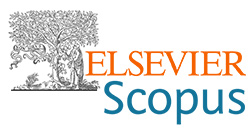Medicinal importance of Emblica officinalis leaf extract nanoparticles and their biological evaluation
DOI:
https://doi.org/10.62638/ZasMat1274Abstract
Green Synthesis of Nanoparticles is a novel field of nanotechnology that outperforms both biological and chemical approaches in terms of biocompatibility, cost-efficiency, scalability and environmental friendliness. Bacteria, fungi, plant and algae have lately been used to produce metals and metal oxide nanoparticles as an alternate method. In the present study, the green synthesis of Silver and copper nanoparticles was carried out using leaf extract of Emblica officinalis as a reducing agent and their antibacterial activity against human pathogens. Biosynthesis of nanoparticles were carried out using methanolic leaves extract of Emblica officinalis. Nanoparticles were characterized by UV-Visible Spectroscopy, X-ray Diffraction patterns (XRD), Scanning Electron Microscopy (SEM) and Transmission Electron Microscopy (TEM). These biogenic particles were tested for antimicrobial activity by disc diffusion method against Escherichia coli & Staphylococcus aureus. Biosynthesized nanoparticles showed potent biological activity and effective radicals scavenging activity. Methanolic leaf extract of Emblica officinalis acts as an excellent capping agent for the formation of silver & copper nanoparticles and demonstrates immense biological activities. Hence, these particles can be used as antibacterial, antioxidant as well as cytotoxic agent in treating many medical complications. It can be concluded that the silver and copper nanoparticles constitute an effective antimicrobial agent against common pathogenic bacteria. This could be a significant achievement in contending with many dynamic pathogens.
Keywords:
nanoparticles, green synthesis, XRDReferences
H.M. Ahmed, A. Roy, M. Wahab, M. Ahmed, G. Othman-Qadir, B.H. Elesawy, T.B. Emran (2021) Applications of Nanomaterials in Agri food and Pharmaceutical Industry, J. Nano. 1472096, 1-10. https://doi.org/10.1155/j.jnano.2021.1472096.
A.A Ahmed, H. Hamzah and M. Maaroof (2018) Analyzing formation of silver nanoparticles from the filamentous fungus Fusarium oxysporum and their antimicrobial activity, Turk. J. Biol. 42, 54-62. https://doi.org/10.3906/biy-1710-2.
Malavi, N. Karimi (2018) Characterization, antibacterial, total antioxidant, scavenging, reducing power and ion chelating activities of green synthesized silver, copper and titanium dioxide nanoparticles using Artemisia haussknechtii leaf extract, Artif. Cells Nanomed. Biotech. 46, 2066-2081. https://doi.org/10.1080/j.artcnb.21691401.2017.1408121.
S. Arokiyaraj, V.D. Kumar, V. Elakya, T. Kamala, S.K. Park, M. Ragam, S. Vincent (2015) Biosynthesized silver nanoparticles using floral extract of Chrysanthemum indicum L. potential for malaria vector control, Environ. Sci. Pollut. Res. 22, 9759-9765. https://doi.org/10.1007/j.espr.11356-015-4148-9 .
M.S. Khan, S.S. Habib, A. Memic (2012) Antimicrobial activity of metal oxide nanoparticles against Gram-positive and Gram-negative bacteria: a comparative study, Int. J. Nanomed.7, 60001-60005. https://doi.org/10.2147/IJN.S35347.
Y.Y. Liu, Y. Wang, T.R. Walsh(2016) Emergence of plasmid-mediated colistin resistance mechanism MCR-1 in animals and human beings in China: a microbiological and molecular biological study, Lancet Infect Dis. 16, 161-168.
T. Alam, R.A.A. Khan, A. Ali, H. Sher, Z. Ullah, M. Ali (2019) Biogenic synthesis of iron oxide nanoparticles via Skimmia laureola and their antibacterial efficacy against bacterial wilt pathogen Ralstonia solanacearum, Mater. Sci. Eng. 98, 101-108. https://doi.org/10.1016/j.msec.2018.12.117.
T. Hayashida, M. Tsutsui, H. Kawakubo (2015) Comprehensive screening of genes resistant to an anticancer drug in esophageal squamous cell carcinoma, Int. J. Onco. 47, 867- 874. https://doi.org/10.3892/ijo.2015.3085.
R. Singh, M.S. Smitha, S.P. Singh (2014) The role of nanotechnology in combating multi-drug resistant bacteria, J. Nano. Sci. Nano. Technol. 14, 4745-4756. https://doi.org/10.1166/j.jnsnt.2014.9527.
L.P. Silva, A.P. Silveira, C.C. Bonatto, I.G. Reis, P.V. Milreu (2017) Nanostructures for Antimicrobial Therapy: Nanostructures in Therapeutic Medicine Series. Elsevier; Amsterdam, The Netherlands, Silver Nanoparticles as Antimicrobial Agents: Past, Present, and Future, Elsevier. 577-596.
E.D. Cavassin, L.F. Figueiredo de, J.P. Otoch (2015) Comparison of methods to detect the in vitro activity of silver nanoparticles (AgNP) against multidrug resistant bacteria, J. Nanobiotechnology. 13-64. https://doi.org/10.1186/s12951-015-0120-6.
K.S. Siddiqi, A. Husen, R.A.K. Rao (2018) A review on biosynthesis of silver nanoparticles and their biocidal properties, J. Nanobiotechno. 16, 1-28. https://doi.org/10.1186/j.jnabt.12951-018-0334-5.
N.A. Al-Dhabi, A.K.M. Ghilan, G.A. Esmail, M.V. Arasu, V. Duraipandiyan, K. Ponmurugan (2019) Environmental friendly synthesis of silver nanomaterials from the promising Streptomyces parvus strain Al-Dhabi-91 recovered from the Saudi Arabian marine regions for antimicrobial and antioxidant properties, J. Photochem. Photobiol. 197-201. https://doi.org/10.1016/j.jphotobiol.2019.111529.
D.S. Balaji, S. Basavaraja, R. Deshpande, D.B. Mahesh, B.K. Prabhakar, A. Venkataraman (2009) Extracellular biosynthesis of functionalized silver nanoparticles by strains of Cladosporium cladosporioides fungus, Colloids Surf. Bio interfaces. 68, 88-92. https://doi.org/10.1016/j.colsurfb.2008.09.022.
M.J. Mehdipour Moghaddam, A.A. Mirbagheri, Z. Salehi, S.M. Habibzade (2015) Prevalence of class 1 integrons and extended spectrum beta lactamases among multi-drug resistant Escherichia coli isolates from north of Iran, Iran Biomed. J. 19, 233-239. https://doi.org/10.7508/j.ibj.2015.04.007.
M.K. Swamy, K.M. Sudipta, K. Jayanta, S. Balasubramanya (2015) The green synthesis, characterization, and evaluation of the biological activities of silver nanoparticles synthesized from Leptadenia reticulata leaf extract, Appl. Nano. sci. 5, 73-81. https://doi.org/10.1007/j.jans13204-014-0293-6.
J.L. Graves, M. Tajkarimi, Q. Cunningham, A. Campbell, H. Nonga, S.H. Harrison, J.E. Barrick (2015) Rapid evolution of silver nanoparticle resistance in Escherichia coli, Front. Genet. 5,42-51. https://doi.org/10.3389/fgene.2015.00042
S.A. Khan, S. Shahid, B. Shahid, U. Fatima, S.A. Abbasi (2020) Green Synthesis of MnO Nanoparticles Using Abutilon indicum Leaf Extract for Biological, Photocatalytic, and Adsorption Activities, Biomole. 10, 785. https://doi.org/10.3390/biom10050785
A.A. Alshehri, M.A. Malik (2020) Phytomediated Photo-Induced Green Synthesis of Silver Nano¬particles Using Matricaria chamomilla L. and Its Cata¬¬lytic Activity against Rhodamine, B. Biomole. 10, 1604. https://doi.org/10.3390/biom10121604.
R. Singh, C. Hano, G. Nath, B. Sharma (2021) Green Biosynthesis of Silver Nanoparticles Using Leaf Extract of Carissa carandas L. and Their Antioxidant and Antimicrobial Activity against Human Pathogenic Bacteria, Biomole.11, 299. https://doi.org/10.3390/biom11020299
A. Zaeem, S. Drouet, S. Anjum, R. Khurshid, M. Younas, J.P. Blondeau, D. Tungmunnithum, N. Giglioli-Guivarc’h, C. Hano, B.H. Abbasi, (2020) Effects of Biogenic Zinc Oxide Nanoparticles on Growth and Oxidative Stress Response in Flax Seedlings vs. In Vitro Cultures: A Comparative Analysis, Biomole.10, 918. https://doi.org/10.3390/biom10060918.
M.A. Ansari, M. Murali, D. Prasad, M.A. Alzohairy, A. Almatroudi, M.N. Alomary, A.C. Udayashankar, S.B. Singh, S.M.M. Asiri, B.S. Ashwini (2020) Cinnamomum verum Bark Extract Mediated Green Synthesis of ZnO Nanoparticles and Their Antibacterial Potentiality, Biomole.10, 336. https://doi.org/10.3390/biom10020336
K. Perveen, F.M. Husain, F.A. Qais, A. Khan, S. Razak, T. Afsar, P. Alam, A.M. Almajwal, M.M.A. Abulmeaty (2021) Microwave-Assisted Rapid Green Synthesis of Gold Nanoparticles Using Seed Extract of Trachyspermum ammi: ROS Mediated Biofilm Inhibition and Anticancer Activity, Biomole.11, 197. https://doi.org/10.3390/biom11020197
S. Mickymaray (2019) One-step Synthesis of Silver Nanoparticles Using Saudi Arabian Desert Seasonal Plant Sisymbrium irio and Antibacterial Activity Against Multidrug-Resistant Bacterial Strains, Biomole. 9, 662. doi: 10.3390/biom9110662.
P. Mulvaney (1996) Surface plasmon spectroscopy of nanosized metal particles, Langmuir,12, 788-800. https://doi.org/10.1021/la9502711.
J.L. Banerjee (2011) Biosynthesis of silver nanoparticles from syzygium cumini (l.) seed extract and evaluation of their in vitro antioxidant activities. Digest J Nano Bio. 6, 961-968.
G.K. Dugganaboyana, C.K. Eranna (2017) Green synthesis of silver nanoparticles by using Simarouba amara aubl. Fruit extract and their antioxidant and antibacterial activities, Int. J. Drug Deliv. Technol. 7, 137-145. https://doi.org/10.25258/ijddt.v7i03.9557
J. Carrola, V. Bastos, I. Jarak, R. Oliveira-Silva, E. Malheiro, A.L. Daniel-da-Silva, H. Oliveira, C. Santos, A.M. Gil, I.F. Duarte (2016) Metabolomics of silver nanoparticles toxicity in HaCaT cells: Structure–activity relationships and role of ionic silver and oxidative stress, Nanotoxicol. 10, 1105-1117. https://doi.org/10.1039/j.nt.d2na00534d.
P. Kumari, P.K.Panda, E.Jha, K.Kumari, K.Nisha, M.A.Mallick, S.K.Verma (2017) Mechanistic insight to ROS and apoptosis regulated cytotoxicity inferred by green synthesized CuO nanoparticles from Calotropis gigantea to embryonic zebrafish, Sci. Rep. 7, 16284.
M.Ghashang,M.Kargar,M.R.Shafiee,S.S.Mansoor,A.Fazlinia,H. Esfandiari (2015) CuO nano-structures prepared in Rosmarinus officinalis leaves extract medium: efficient catalysts for the aqueous media preparation of dihydropyrano [3, 2-c] chromene derivatives. Recent Pat. Nanotechnol., 9 (3), 204-211. https://doi.org/10.2174/1872210510999151126110657.
N. Dror, M. Mandel, Z. Hazan, G. Lavie (2009) Advances in microbial biofilm prevention on indwelling medical devices with emphasis on usage of acoustic energy, Sensors (Basel).9, 2538–2554.
E.Z. Gomaa (2017) Silver nanoparticles as an antimicrobial agent: A case study on Staphylococcus aureus and Escherichia coli as models for Gram-positive and Gram-negative bacteria, J. Gen. Appl. Microbiol. 63, 36-43. https://doi.org/10.2323/jgam.2016.07.004 .
G. Cheng, M. Dai, S. Ahmed, H. Hao, X. Wang, Z. Yuan (2016) Antimicrobial drugs in fighting against antimicrobial resistance, Front. Microbiol. 7, 461-470. https://doi.org/10.3389/fmicb.2016.00470.
A. Abbaszadegan, Y. Ghahramani, A. Gholami, B. Hemmateenejad, S. Dorostkar, M. Nabavizadeh, H. Sharghi (2015) The Effect of Charge at the Surface of Silver Nanoparticles on Antimicrobial Activity against Gram-Positive and Gram-Negative Bacteria: A Preliminary Study, J. Nanomater. 7, 1-10. https://doi.org/10.1155/2015/720654.
M. Mühling, A. Bradford, J.W. Readman, R.D. Somerfield, P.G.R.D Handy (2009) An investigation into the effects of silver nanoparticles on antibiotic resistance of naturally occurring bacteria in estuarine sediment, Mar Environ Res. 68, 278-283. https://doi.org/10.1016/j.marenvres.2009.07.001 .
T. Naseem, M.A. Farrukh (2015) Antibacterial activity of green synthesis of iron nanoparticles using Lawsonia inermis and Gardenia jasminoides leaves extract, J. Chem. 2015, 1-7. https://doi.org/10.1155/j.chem.2015/912342.
C. Chifiriuc, V. Grumezescu, A.M. Grumezescu (2012) Antifungal activity of chemotypes essential oil from rosemary against Candida albicans, Nanoscale Res. Lett. 7, 1-7. https://doi.org/10.4236/ojst.2013.32031.
S.S. Behera, J.K. Patra, K. Pramanik (2012) Characterization and Evaluation of Antibacterial Activities of Chemically Synthesized Iron Oxide Nanoparticles. World. J. Nano. Sci. & Eng. 2, 196-200. https://doi.org/10.4236/wjnse.2012.24026.
M.S Aung, H. Zi, K.M. Newb (2016) Drug resistance and genetic characteristics of clinical isolates of Staphylococci in Myanmar: high prevalence of PVL among methicillin-susceptible Staphylococcus aureus belonging to various sequence types, New Microbes New Infect. 10, 58-65. https://doi.org/10.1016/j.nmni.2015.12.007.
A. Kędziora, M. Speruda, E. Krzyżewska, J. Rybka, A. Łukowiak, G. Bugla-Płoskońska (2018). Similarities and differences between silver ions and silver in nanoforms as antibacterial agents, Int. J. Mol. Sci. 19, 432-444. doi:/10.3390/ijms19020444.
N.Y. Lee, W.C. Ko, P.R. Hsueh (2019) Nanoparticles in the treatment of infections caused by multidrug-resistant organisms, Front. Pharmacol. 10, 1145-1153. https://doi.org/10.3389/fphar.2019.01153







